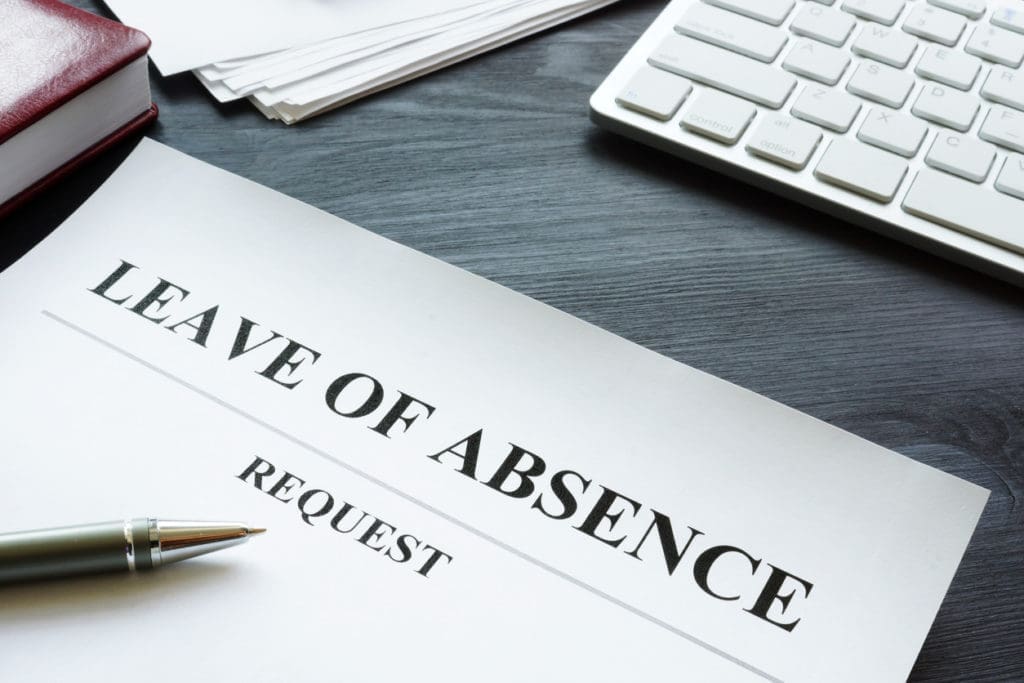How to Handle an Employee Leave of Absence

As an employer, it is essential to have a plan of action in place to handle an employee leave of absence. Not only should your company policies reflect your preparation for situations like these, but you should be prepared to take the necessary steps to fill the responsibilities of the employee on leave. Managing an employee’s leave of absence does not have to be stressful for a company or its employees with the proper measures in place.
How to Prepare for an Employee Leave of Absence
Being prepared for an employee leave of absence starts with the appropriate company policies to ensure that these absences are appropriately taken. From following legal requirements for employee leaves to well-informing employees are all parts of ensuring that your company is prepared.
Company Policy
Having a leave of absence policy is extremely important. With a company policy, you will be able to ensure that your employees rightfully take leaves of absence. Outlining in the company policy what is acceptable for an appropriate leave of absence is vital. For example, anything from a personal illness or a death in the family should be allowed for a leave of absence. The majority of other allowances are up to the company.
Additionally, a certain amount of vacation time should be allotted to employees depending on the amount of time they have worked for the company. If allowed leave time accrues, the accrual rate should be explained and how an employee is permitted to use this time. In addition, blackout periods should be accounted for. During busy seasons or holidays, many companies cannot afford for employees to take extended periods off unless it is for an emergency. Specifying when a blackout period will occur is crucial for a company policy and ensuring that employees do not leave the company empty-handed.
Specific Circumstances
All employee leave of absence information should be outlined in the employee handbook. There are several instances where an employee may need extended leaves of absence. The FMLA grants up to 12 workweeks of leave in a 12-month period to employees with specific circumstances.
- A child’s birth
- Care for the child within one year of birth
- Adoption of a child
- Care for the newly placed child within one year of placement.
The FMLA also covers an employee who needs to care for a spouse, child, or parent with a severe medical condition or a serious health condition that leaves the employee unable to work.
Leave of absences must also cover allowing employees to take up to 15 workdays of paid leave for voluntary or involuntary training with the military. The USERRA covers individuals who are training with the military but does not cover individuals considered temporary workers.
How to Manage an Employee Leave of Absence
While having policies in place can prepare your company for an employee’s leave of absence, being able to manage without the employee for some time can be a challenge. Therefore, it is essential to have a plan if an employee needs to take a leave of absence abruptly.
Job Responsibilities
Outlining each employee’s job responsibilities and how they will be covered is the first step in managing an employee’s leave. For example, an ongoing cross-training program can complete essential tasks with minimal disruption if an employee is absent. In addition, having employees that can handle a job while an employee is gone will save you from delegating. It is also essential that all employees request a leave of absence in advance.
Delegating Tasks
Delegating tasks among employees while another employee is gone is one of the most common ways a company may cover an employee’s leave of absence. Larger companies with many employees will usually have an easy time rearranging tasks to cover absent employees’ duties. However, small businesses may not be able to do this. With a small number of employees, a small business may overwork employees if they try to delegate tasks. In this case, a company may need to hire a temporary employee. Having a temporary employee carry out routine duties that are easy to learn can save other employees from being overworked without a coworker. In addition, permanent employees can take on tasks that are more difficult to understand in a short period. With this, a small business will be able to manage while an employee is gone for some time.
Remote Work
In today’s work world, remote work has become very common and has provided businesses with many benefits. While many situations may prevent an employee from working remotely during a leave of absence, there may be times when this is possible. With medical approval, an employee can work from home. If they work part-time instead of their usual full time, this can ease the stress that the leave can put on a company. Having the employee work short periods remotely can help cover tasks that are especially important while an employee is gone. As a company, you will usually have to provide a laptop, equipment, and a connection to the company network to fulfill this type of work.
Manage Your Employees with Canal HR
Canal HR is a full-service independent HR company serving businesses since 1992. Canal HR takes care of all HR responsibilities and lets you focus on reaching goals. We offer a full range of HR services, including payroll administration, workers’ compensation, risk management, human resources compliance, and more. Contact us today to learn how Canal HR can help you.

